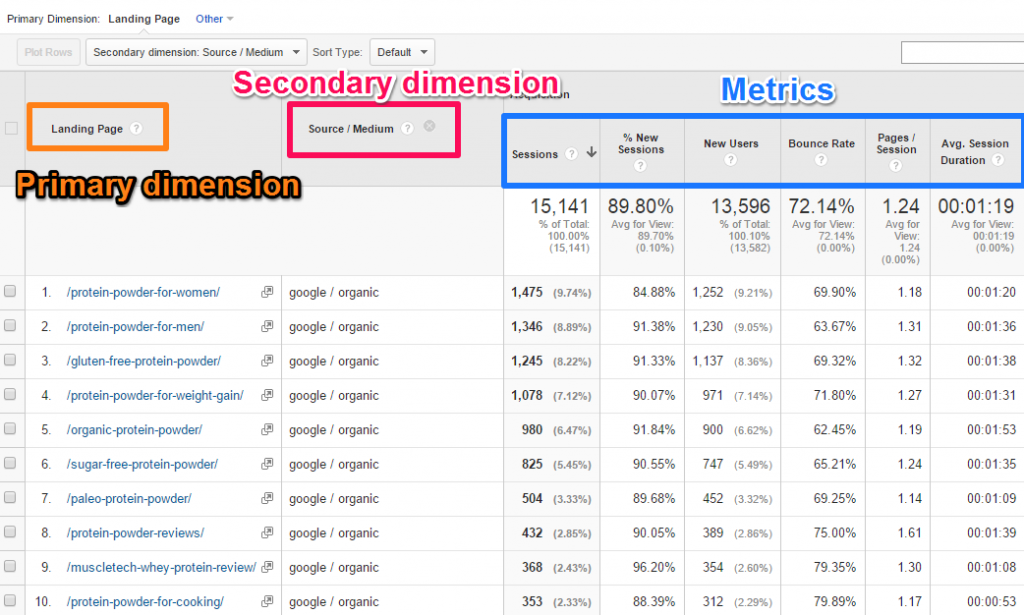The Significance of 'Secondary Dimensions' in Google Analytics: Detailed Analysis
The Significance of 'Secondary Dimensions' in Google Analytics: Detailed Analysis
Blog Article
Decoding the Significance of Additional Measurement in Google Analytics: Everything About Its Importance and Impact
In the world of digital analytics, the application of secondary measurements within Google Analytics acts as a crucial device for discerning much deeper layers of data understandings. The importance of second measurements hinges on their ability to give a nuanced view of customer actions and interaction with an internet site or system. By dissecting data beyond surface-level metrics, services can open a riches of info that forms strategic choices and fine-tunes advertising initiatives. This exploration right into the world of secondary dimensions not just offers a thorough understanding of customer involvement however also clarifies the elaborate dynamics that drive online performance.
Understanding Second Measurements in Google Analytics
The understanding of second measurements in Google Analytics is vital for obtaining deeper insights right into individual habits and internet site efficiency. While primary dimensions offer essential information points such as traffic sources and page views, second dimensions permit a more nuanced analysis by giving additional context to these main metrics. By incorporating secondary measurements, users can sector and filter their data to reveal patterns and patterns that may not be instantly evident.

Introducing the Advantages of Additional Dimensions
Structure upon the fundamental understanding of additional measurements in Google Analytics, checking out the benefits they use exposes vital insights for boosting data evaluation and decision-making. By integrating secondary dimensions, individuals can dig deeper into their information, acquiring a much more comprehensive view of user habits, material performance, and various other crucial metrics. One of the main advantages is the capacity to segment information, enabling an extra granular evaluation of numerous measurements such as website traffic resources, tools, demographics, and more. This segmentation enables individuals to identify patterns, fads, and connections that might not be noticeable when checking out information in accumulation.
Additionally, secondary measurements provide context to primary information, using additional layers of info that can aid in understanding customer communications and choices. This improved understanding can assist calculated decision-making, leading to even more targeted marketing projects, web site optimizations, and total improved efficiency. Basically, second measurements work as an effective device for unlocking much deeper insights and taking full advantage of the energy of Google Analytics for organizations and web site proprietors.
Leveraging Second Measurements for Boosted Insights
By harnessing the power of additional dimensions in Google Analytics, services can reveal deeper insights that drive informed calculated and decision-making optimization efforts. Leveraging second dimensions allows services to dig past surface-level data and obtain a more comprehensive understanding of customer actions, target market demographics, website traffic sources, and site performance. For example, by incorporating main dimensions like website traffic resources with secondary dimensions such as geographical location or device classification, right here businesses can identify which areas or devices are driving one of the most important traffic to their site.
In addition, additional measurements enable organizations to section and analyze data better, assisting them recognize patterns, patterns, and chances that may have or else gone undetected. By utilizing secondary dimensions, organizations can tailor their advertising and marketing strategies, web content, and individual experience to far better satisfy the demands and choices of their target market. Basically, leveraging secondary dimensions in Google Analytics empowers businesses to make data-driven choices that result in boosted performance, raised ROI, and lasting development.

Effect of Second Measurements on Data Analysis
Enhancing data evaluation with the usage of additional dimensions in Google Analytics gives businesses with a deeper understanding of their on-line efficiency metrics. By integrating second measurements, such as time of day, geographical area, or tool classification, organizations check my blog can discover valuable understandings that might have been forgotten with key measurements alone. This improved degree of granularity enables even more accurate division of data, allowing companies to identify patterns, patterns, and relationships that can drive strategic decision-making.

Maximizing Potential: Secondary Capacities Techniques
One crucial approach is to incorporate second measurements with primary measurements to gain a thorough view of customer interactions. Pairing the main measurement of 'source/medium' with second measurements like 'touchdown page' or 'tool category' can reveal which channels are driving traffic to details web pages or how user actions varies throughout devices.
Furthermore, making use of second dimensions to segment additional reading information based on user demographics, actions, or technology can help companies customize their advertising and marketing efforts to particular target market sections. This targeted strategy can lead to improved conversion prices, boosted user experiences, and inevitably, increased ROI. By optimizing the capacity of secondary measurements in Google Analytics, businesses can make educated choices, maximize their online presence, and drive lasting development.
Final Thought
In conclusion, additional measurements in Google Analytics play a crucial function in providing deeper insights and enhancing information evaluation. Including second dimensions right into data evaluation strategies can lead to more educated decision-making and boosted overall performance.
While key measurements provide essential data factors such as traffic sources and page views, additional dimensions enable for a more nuanced analysis by supplying additional context to these primary metrics. By integrating primary measurements like traffic resources with additional measurements such as geographical location or tool group, businesses can identify which areas or tools are driving the most beneficial traffic to their web site.
By integrating second measurements, such as time of day, geographic place, or tool group, businesses can uncover beneficial insights that may have been ignored with key measurements alone. One vital approach is to integrate additional dimensions with key measurements to get an extensive view of customer interactions. Pairing the main dimension of 'source/medium' with additional dimensions like 'touchdown web page' or 'tool category' can reveal which networks are driving traffic to particular web pages or exactly how user behavior varies across tools.
Report this page